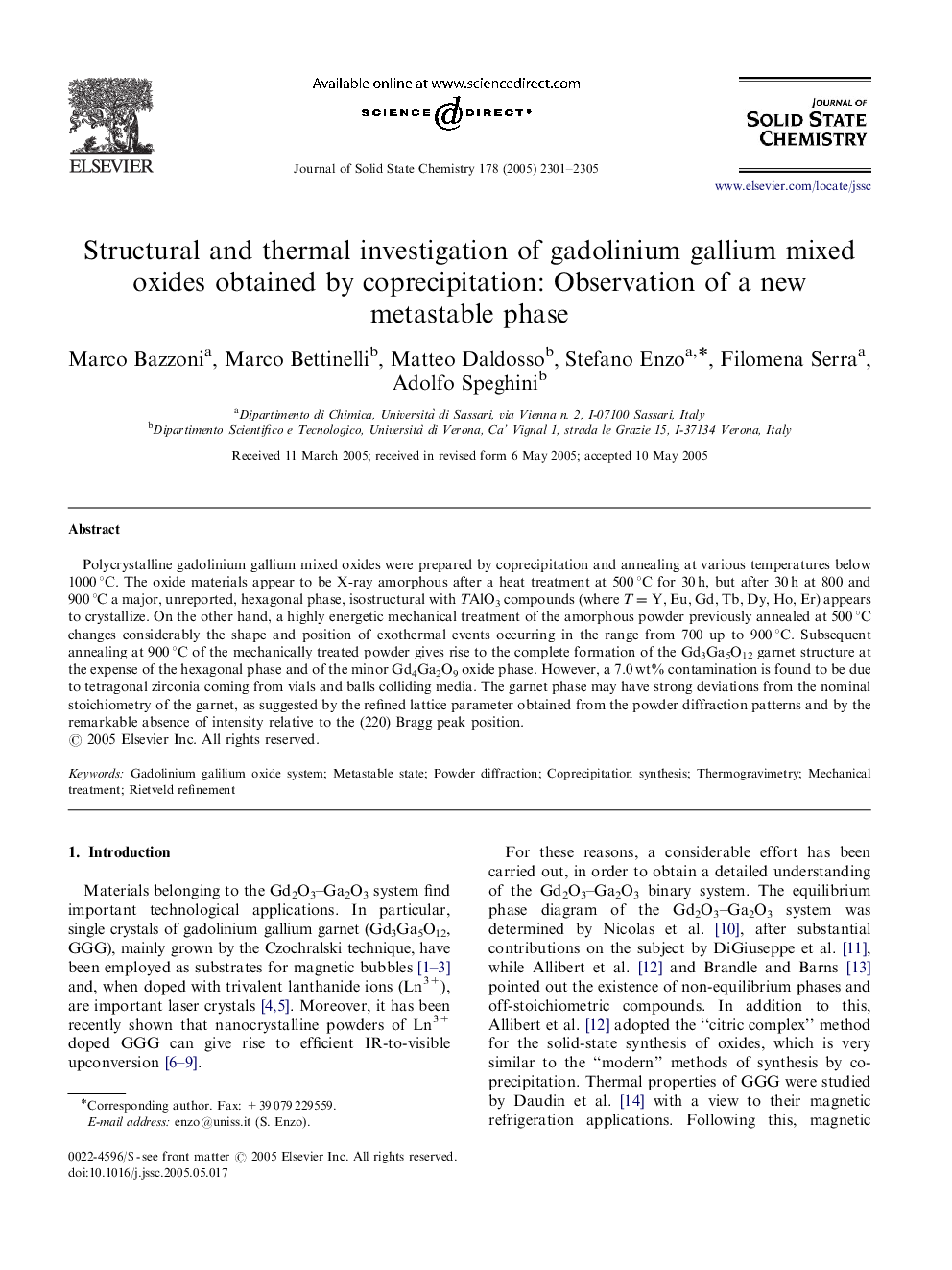| Article ID | Journal | Published Year | Pages | File Type |
|---|---|---|---|---|
| 1333681 | Journal of Solid State Chemistry | 2005 | 5 Pages |
Polycrystalline gadolinium gallium mixed oxides were prepared by coprecipitation and annealing at various temperatures below 1000 °C. The oxide materials appear to be X-ray amorphous after a heat treatment at 500 °C for 30 h, but after 30 h at 800 and 900 °C a major, unreported, hexagonal phase, isostructural with TAlO3 compounds (where T=Y, Eu, Gd, Tb, Dy, Ho, Er) appears to crystallize. On the other hand, a highly energetic mechanical treatment of the amorphous powder previously annealed at 500 °C changes considerably the shape and position of exothermal events occurring in the range from 700 up to 900 °C. Subsequent annealing at 900 °C of the mechanically treated powder gives rise to the complete formation of the Gd3Ga5O12 garnet structure at the expense of the hexagonal phase and of the minor Gd4Ga2O9 oxide phase. However, a 7.0 wt% contamination is found to be due to tetragonal zirconia coming from vials and balls colliding media. The garnet phase may have strong deviations from the nominal stoichiometry of the garnet, as suggested by the refined lattice parameter obtained from the powder diffraction patterns and by the remarkable absence of intensity relative to the (220) Bragg peak position.
Graphical abstractPolycrystalline gadolinium gallium oxide powders obtained by the co-precipitation are subjected, after annealing at 800 °C for 30 h, to an amorphous-to-crystalline transformation leading to a new hexagonal GdGaO3 phase. When the annealing is preceded by a mechanical treatment, the powder crystallizes in a single-phase Gd3Ga5O12 garnet product.Figure optionsDownload full-size imageDownload as PowerPoint slide
